It’s our hope that each of you, our readers, will fully appreciate and enjoy this article about these 7 Amazingly Evolved Marine Species. We certainly enjoyed compiling the different data for you. It’s our further hope that it provides you with much to learn and consider.
Clearly, though, these few species listed herein represent only the smallest part of the forms of life that abound in this region. We do feel, however, that they serve as excellent representatives of that abundance. To learn of more such, check out our other articles.
Epaulette Shark
Epaulette Shark Facts
- Starting off this article about 7 Amazingly Evolved Marine Species, we give you the intriguing animal named the Epaulette Shark.
- The descriptive term applied to it serves as the common name for an unusual variety of shark. Its scientific name, however, is the somewhat difficult to pronounce term of Hemiscyllium ocellatum. By either name, though, it’s a fascinating species.
- Originally, it bore a different, and slightly more pronounceable, official name. That term, assigned during its first scientific recognition, was Squalus ocellatus. The French naturalist Pierre Joseph Bonnaterre bestowed that initial title in 1778.
- It’s best known, though, for the astounding ability it evolved. This variety of shark literally, and frequently, walks across the ocean floor, or even dry land! The fish manages this locomotion by using its fins to undulate its way across the seabed.
- Fortunately, the population base of the marvelous Epaulette Shark appears to be both sufficient and comparatively stable. The IUCN, therefore, presently lists this marvel of Nature as Least Concern. That status appears on its Red List of Threatened Species.
- This amazing fish nevertheless faces at least some potential threats to its continued existence. Like every other living thing on the planet, climate change could pose a serious threat in the near future. For the moment, though, few other factors threaten it.
Epaulette Shark Physical Description
The visually surprising Epaulette Shark constitutes a mesmerizing species, in the opinions of some individuals. It does not, however, earn this distinction due to sheer size. That’s because this wonderful animal actually ranks as a very small variety of shark.
Individuals of both genders also attain an average length of between 27 – 35 in (70 – 90 cm). Exceptional specimens, though, grow to as much as 42.1 in (107 cm). Yet, unlike many related species, this fish does not display any noticeable degree of sexual dimorphism.
The body of the Epaulette Shark develops as quite slender, and relatively elongated. Its snout, meanwhile, appears rounded and very short in structure. It also possesses between 26 – 35 rows of teeth in its upper jaw, along with 21 – 32 rows of teeth within its lower jaw.
The most noteworthy feature is the one that’s the source of the common name. That’s the presence of a large black spot behind each pectoral fin, surrounded by a white ring. The rest of the body also displays a brownish to beige shade, with brown spots and bands.
- Kingdom: Animalia
- Phylum: Chordata
- Class: Chondrichthyes
- Order: Orectolobiformes
- Family: Hemiscylliidae
- Genus: Hemiscyllium
- Species: H. ocellatum
Epaulette Shark Distribution, Habitat, and Ecology
Sadly, the Epaulette Shark has one factor limiting its potential for successful competition with related species. That’s the fact that it only appears to live in a highly restricted portion of the globe. That range further consists of parts of the western Pacific Ocean.
More specifically, its only confirmed range extends from the northern coast of Australia to the southern shores of New Guinea. Unconfirmed reports, however, indicate the possibility that a small population may also exist around Sumatra, Malaysia, and the Solomon Islands.
Like many of the other small varieties, this particular shark evolved as a bottom-dwelling species. In its case, though, the creature rarely appears at depths greater than 131 ft (40 m). It also principally inhabits regions of coral reef, including the Great Barrier Reef.
Like virtually all known shark types, the small yet impressive Epaulette Shark evolved as a carnivore. Its own size, however, restricts its choices of prey. These mainly consist of various small fish and crustaceans. But, it also occasionally feeds on polychaete worms.
Regardless of its prey of choice at a given moment, it most commonly hunts during period of low tide. Apart from this, its greatest periods of activity typically occur at dusk and dawn. Its own predators, meanwhile, include other, larger sharks, and grouper.
Flapjack Octopus
Flapjack Octopus Facts
- Appearing next in this listing of 7 Amazingly Evolved Marine Species we present fascinatin animal known as the Flapjack Octopus.
- This incredible example of the efforts of Nature and evolution most frequently goes by the common name for good reason. Sometimes, however, individuals refer to it by the alternate common name of the adorabilis, for wholly understandable reasons.
- The distinctive common names for this wonder of Nature do not simply stop there, however. That’s because the Mollusc also has yet another name used to refer to it. All members of its genus are also collectively known sometimes as flapjack devilfishes.
- Professional researchers, meanwhile, typically refer to it by its scientific name. That’s the less descriptive, and certainly less pronounceable, term of Opisthoteuthis californiana. No matter which term one uses to refer to it, it has a unique appearance.
- The first scientific notation of this cephalopod as a separate and distinct species only took place in modern times. More precisely, it occurred in 1949. This event occurred as a direct result of the efforts of the American marine zoologist, Samuel Stillman Berry.
- For the moment, little specific data concerning its population and range exists. The IUCN, therefore, now lists it as Data Deficient on the organization’s Red List of Threatened Species. This umbrella octopus seems reluctant to yield its secrets!
- The Flapjack Octopus nonetheless likely faces the same potential threats as other species around the world. These include such factors as habitat loss or degradation, and commercial fishing practices. Climate change, however, is likely its greatest threat.
Flapjack Octopus Physical Description
The amazing Flapjack Octopus derives it most frequently used common name from its overall shape. That, as can be clearly seen here, consists of a flattened shape for the mantle. This surrounds a dome-shaped inner portion, though the body’s highly gelatinous in nature.
The cephalopod does not, however, impress one due to size, relying on its appearance for that. That holds true due to the fact that this species of umbrella octopus remains relatively tiny. In fact, individuals rarely attain a mantle length of more than 8 in (20 cm).
Unlikely many of its kindred, however, it displays no noticeable degree of the physiological characteristic of sexual dimorphism. That particular trait also distinguishes it from most known cephalopods. It’s a trait generally shared with the rest of its genus, though.
In color, the remarkable Flapjack Octopus typically appears primarily red. It does, however, often display small whitish portions along the edge of the mantle. Its eight jointed legs are fixed together, with the mantle itself strung between them, creating the umbrella appearance.
The small, but efficient eyes of this fascinating Mollusc develop affixed to the top of the bulbous head. Two small, wing-shaped structures also appear on the head, typically above the eyes. In this, the unique creature resembles some of the known varieties of squid.
- Kingdom: Animalia
- Phylum: Mollusca
- Class: Cephalopoda
- Order: Octopoda
- Family: Opisthoteuthidae
- Genus: Opisthoteuthis
- Species: O. californiana
Flapjack Octopus Distribution, Habitat, and Ecology
Unfortunately, the precise range of distribution for the marvelous Flapjack Octopus remains an uncertaim matter. That’s because it’s only been sighted in a few, widely separated locations. This likely further indicates a wide, perhaps even global, range of distribution.
It remains possible, however, that it once had a larger range, but now only exists in small populations in these few areas. For the moment, that’s just one more of the things science does not yet know with any certainty, where this particular creature is concerned.
One region where the animal’s been sighted lies off the coast of California, in the United States, in North America. The other known zones of habitation consists of the Bering Sea and the Sea of Okhotsk, along with a location just off the coast of central Honshu.
All reported sightings indicate it has a preference for open ocean, and at certain ranges of depths. The specimens observed appeared at depths ranging from 660 – 4,900 ft (200 -1,500 m). This generally places the animals in the benthic zone, near the ocean bottom.
It moves via a surprising combination of methods. These include, of course, pushing water through its jet, like most other related species. It does, however, also employ both its webbed arms, in a pulsing motion, as well as even using its flap-like fins atop the head!
Malesof the Flapjack Octopus appear to perform various rituals to attract the female. After mating, she usually produces between 200 – 500 eggs. After hatching, the young remain near their mother for a time, though, before swimming off to hopefully survive on their own.
Pikachu Nudibranch
Pikachu Nudibranch Facts
- The third species making its presence felt in this compilation of 7 Amazingly Evolved Marine Species is the astounding Pikachu Nudibranch.
- This eye-catching marvel of Nature frequently goes by an equally attention-grabbing common name that won’t surprise some people. For the moment, unlike the majority of species around the world, it has no other generally accepted common name.
- Among scientific professionals, however, such as researchers, it’s typically referred to by its official name. That term, though remains somewhat hard for the layman to pronounce, as often occurs. That’s because it bears the moniker of Thecacera pacifica.
- It further recieved that slightly tongue-twisting technical name due to the work of the Danish researcher, Rudolph Bergh. He recorded the first official recognition of the animal as a separate and distinct species. This action noteworthy occured in 1883.
- For the moment, the Pikachu Nudibranch appears to be maintaining a population base that’s both stable and sufficient. This trend also seems to hold true throughout the entirety of its native range. The IUCN, therefore, currently has no listing for it.
- The intriguing Gastropod nevertheless must be considered to be facing at least some potential threats to its existence. These, though, consist of the same perils facing most species today. The greatest of there, however, likely consists of climate change.
Pikachu Nudibranch Physical Description
The amazing Pikachu Nudibranch easily draws the eye of those fortunate to encounter it in Nature. The remarkable Mollusc does so, however, for reasons unrelated to sheer size. That’s because this marvel of evolution developed as smaller than many of its kindred.
In this respect, it also stands out from many other creatures in the world. That’s true since the tiny wonder qualifies as a hermaphrodite. Thus, individuals remain both male and female. The physiological trait of sexual dimorphism, therefore, does not apply to it.
In terms of pure size, though, individuals vary widely in this respect. That principally occurs due to various environmental facctors. An average-sized mature adult, though, measures roughly 0.8 (2 cm) in length. Exceptional specimens do nevertheless occur, yet remain rare.
It’s the overall physical appearance of the Pikachu Nudibranch, though, that garners most of the attention. As its very name suggests, in the minds of many it bears a striking resemblance to the Pokémon character named Pikachu. Its one of Nataure’s many coincidences.
That’s due to the overall color scheme. The majority of the small body manifests as a translucent yellow to yellowish-orange color. Its several sheaths, however, present black edges with blue patches. Black tips also appear around the gills, with blue at the tip of its tail.
- Kingdom: Animalia
- Phylum: Mollusca
- Class: Gastropoda
- Order: Nudibranchia
- Family: Polyceridae
- Genus: Thecacera
- Species: T. pacifica
Pikachu Nudibranch Distribution, Habitat, and Ecology
Fortunately, both for the Pikachu Nudibranch itself, and those who appreciate Nature, it evolved as endemic to a relatively broad swathe of the globe. Not surprisingly, though, that area happens to be well known for its abundance of impressive marine species.
More precisely, evidence indicates that the intriguing animal inhabits a wide section of the Indian Ocean. It also appears in many regions of the western Pacific. For the moment, research indicates that it never existed outside of that range. Research is ongoing, however.
This impressive little creature also seems to prefer the shallower depths. That’s the case for many of its relatives. Due to that tendency, it’s almost always found comparatively close to the shoreline. This holds true whether that’s the shoreline of the continent or an island.
Some of the regions where it’s most frequently spotted include the African coast, Vanuatu, and Indonesia. It’s also been spotted in smaller numbers in the Gulf of Mexico. In all areas in which it appears, though, it’s never been spotted at depths greater than 62.3 ft (19 m).
Like the majority of its related species, the Pikachu Nudibranch evolved as carnivorous in nature. In its specific case, due to its sheer size, its prey remains small. This most commonly consists of locally available quantities of algae and plankton, as well as small jellyfish.
Researchers currentlyknow very little about many aspects of its life. That includes its lifespan. For similar species, however, this ranges from a few weeks to a few years. One thing that scientists do known, though, is that, like many other nudibranches, it quite toxic.
Crocodile Fish
Crocodile Fish Facts
- Here, in this compendium of 7 Amazingly Evolved Marine Species we present to you the remarkable creature known as the Crocodile Fish.
- The definitely attention-grabbing term given it serves as one of the accepted common names for this remarkable marine species. It also goes by another common name, though. That alternate name’s the equally distinctive Tentacled flathead.
- Its scientific name, meanwhile, remains almost unpronounceable. That’s because it bears the tongue-twisting official designation of Papilloculiceps longiceps. By either of these terms, however, it’s undeniably a visually distinctive species.
- The French naturalist and zoologist, Georges Cuvier, made the first official recognition of the animal as a separate species. This landmark event took place in 1829. Quite surprisingly, despite his body of work, he strongly opposed the concept of evolution.
- Fortunately, the Crocodilefish also appears to be maintaining a fairly sizeable and stable population. The fascinating creature further seems to be doing so throughout the entirety of its natural range. It’s also now spread to other areas of the globe.
- It’s believed it migrated through the man-made access provided by the Suez Canal. This, however, provided it with the opportunity to expand beyond its native range, albeit artificially. The IUCN, due to these combined factors, lists it as Least Concern.
- Although its current situation seems secure, that could change. That’s because, like most of the forms of life on earth, it now faces new threats to its continued existence. While these vary, the greatest threat no doubt comes from ongoing climate change.
Crocodilefish Physical Description
Although it’s true that the Crocodilefish creates a highly imposing and intimidating appearance, it doesn’t do so due to sheer size. That’s because it actually ranks as a small variety of marine fish. Nature, it seems, places no importance on size in its various creations.
The remarkable fish further displays a moderate degree of the physiological trait of sexual dimorphism. In its particular case, this characteristic manifests itself in terms of simple size. More specifically, males of the species generally attain a greater length than females.
The difference remains relatively small, though. Overall, however, it averages roughly 19.7 in (50 – 60 cm) in total length. Exceptional specimens do occur, however. These singularly impressive individuals sometimes reach lengths of as much as 27.5 in (70 cm).
In appearance, meanwhile, individuals of both genders achieve the same general pattern. Overall, the Crocodilefish presents a mottled combination of gray, green, and brown. This coloring, along with a knobby skin surface, gives it excellent camouflage in its habitat.
- Kingdom: Animalia
- Phylum: Chordata
- Class: Actinopterygii
- Order: Scorpaeniformes
- Family: Platycephalidae
- Genus: Papilloculiceps
- Species: P. longiceps
Crocodilefish Distribution, Habitat, and Ecology
Perhaps most notably, the current range of distribution of the amazing Crocodilefish now exceeds its original one. Even now, however, its territorial range remains comparatively restricted. Its entire range still fits entirely within the Eastern Hemisphere.
More precisely, though, its native range consists solely of the Red Sea, in the Western Indian Ocean. Now, however, the actions of man have allowed it to spread to portions of the Mediterranean. For the moment, it does not appear to be expanding any further than that.
Regardless its exact location, though, the creature demonstrates a decided preference in its choice of habitat. Throughout the entirety of its range, both natural and artificial, it lives on the ocean bottom. It does nevertheless appear there only in shallow depths, near reefs.
The fascinating Crocodilefish hunts exclusively as a predatory carnivore. On the sandy sea floor, its natural appearance allows it to lay in wait for unsuspecting prey to approach. From its concealment, it strikes, eating virtually any fish small enough to fit in its mouth.
Staghorn Coral
Staghorn Coral Facts
- The next animal appearing in this article about these 7 Amazingly Evolved Marine Species bears the unique name of the Staghorn Coral.
- This distinctive marine invertebrate most frequently goes by this unique, but descriptive, common name. And it fits! Unlike the majority of species, for the moment, this marvel does not possess any other generally accepted common name.
- Among scientific professionals, however, it’s typically referred to by its technical name. Fortunately, that’s a relatively simple term, at least as such things go. That’s because this remarkable creature bears the formal name of the Acropora cervicornis.
- It received this formal name due to the work of the respected French naturalist, Jean-Baptiste Pierre Antoine de Monet. He made the first official recognition of the creature as a separate and distinct species. This scientifically noteworthy event occurred in 1816.
- Unfortunately, though, the population of this wonderful species has been declining rapidly since around 1970. This further seems to hold true throughout the entirety of its range. The IUCN, therefore, now lists the animal as Critically Endangered.
- Multiple projects to attempt to preserve the Staghorn Coral, however, remain underway. The aptly-named Coral Restoration Foundation, along with other organizations, spearhead most of these. Sadly, however, results have so far been minimal.
- This product of evolution also faces threats from numerous factors. These include a particularly virulent coral disease. Pollution of its habitat also constitutes a severe danger. The greatest threat it faces, however, most likely consists of climate change.
Staghorn Coral Physical Description
The magnificent Staghorn Coral easily fascinates those fortunate enough to encounter it. It also does this in several ways. That’s due to the unique fact that, unlike some of its kindred, this product of Nature and evolution impresses in both size and overall appearance.
Although corals come in all shapes and sizes, this one perhaps ranks among the most unusual. That’s due to its evolved pattern of physical development. This member of its Order manifest numerous cylindrical, upward growing branches, not unlike some trees.
These further develop as highly elongated, comparatively thin structures. Each of these also branches out, often having multiple smaller branches. Depending on the age of the individual these vary in length from as little as 2 in (5 cm), to more than 6.5 ft (2 m).
Among older specimens of the Staghorn Coral, these same branching structures also attain an average thickness measuring 1 – 3 in ( 2.5 – 7.5 cm). These same portions of the coral typically angle upward, and rise upward from a single, comparatively hard trunk.
As a general principle, the marvelous Cnidaria additionally displays a remarkably consistent pattern of coloration. This mainly consists of either a pale brown or golden tan shade. That’s further enhanced, however, by the presence of comparatively short, bright white tips.
- Kingdom: Animalia
- Phylum: Cnidaria
- Class: Hexacorallia
- Order: Scleractinia
- Family: Acroporidae
- Genus: Acropora
- Species: A. cervicornis
Staghorn Coral Distribution, Habitat, and Ecology
Unfortunately, both for the Staghorn Coral itself, and for those who appreciate Nature, it inhabits a relatively limited portion of the marine waters of the world. Research also indicates that the species never possessed a more extensive zone of habitation.
That habitat range includes a small portion of the northern Atlantic Ocean. The most northerly part of that range, though, only extends to the east coast of Florida, in the United States. From there, it extends to the Bahamas and the Caribbean Islands.
A limited, disjointed population also appears in the western Gulf of Mexico. In all areas in which it lives, however, it displays the same, decidedly clear preference for where it makes its home. It generally appears in reefs, with other corals, rarely appearing alone.
Yet the wonder of Nature also displays a strong preference for extremely shallow depths. This usually places it close to the shoreline. More precisely, it sometimes lives directly at the shoreline. At its deepest, though, it’s never seen at depths of more than 98 ft (30 m).
Another aspect of its nature also distinguishes the Staghorn Coral from most of its brethren. That’s due to the fact that it displays the fastest known growth rate of all corals of its type in its region. Its many branches often grow as much as 7.9 in (20 cm) per year.
This marine marvel alsp reproduces both asexually and sexually, with the former being the dominant method. This occurs when branches break off and reattach to the ocean floor. Sexual reproduction, however, also happens, typically in either August or September.
Green Sawfish
Green Sawfish Facts
- Now we give you the next member of this listing of 7 Amazingly Evolved Marine Species, best known for its appearance, the Green Sawfish.
- Perhaps most notably, the term for this wonder of Nature serves as one of the common names for a highly impressive variety of marine fish. Further, this particular species also goes by numerous other common names, in various parts of its range.
- These include those of the Longcomb fish, and the narrowsnout sawfish. Meanwhile, though, this extremely fascinating wonder of Nature also bears a comparatively simple scientific name, unlike some species. It bears the name of the Pristis zijsron.
- Regardless of which name one uses to refer to the creature, it remains a most interesting species. First of all, despite a common belief, as a member of the Pristidae Family, this truly remarkable marine animal actually forms a type of ray.
- In point of fact, many people believe this remarkable creature of the seas to represent another form of shark. Further, and most impressively, it also ranks as perhaps the largest of all currently known species of its type.
- Quite regrettably, though, the presently known population of the marvelous Green Sawfish has declined dramatically in recent decades. As a result of this sad state of affairs, the IUCN currently lists the animal as Critically Endangered.
- Additionally, this lamentable status appears on the organization’s Red List of Threatened Species. It does so for several reasons. Historically, commercial fishing constituted the greatest threat to this particular fish, as it does for so many others.
- Nevertheless, given its current numbers, that threat, though certainly still present, has taken a back seat to others. The dual perils of habitat loss and ongoing climate change likely now form the most severe threats to its continued existence.
Green Sawfish Physical Description
Although many reasons to appreciate the Green Sawfish exist, its most impressive characteristic remains its sheer physical size. Quite interestingly, although it does display the common trait of sexual dimorphism, this species does so in a most unusual manner.
That holds true due to the fact that, in the case of this animal, this manifests itself in terms of the prongs on the rostrum. Firstly, the males possesses an average of 18 prongs on each side of the rostrum. Meanwhile, the females only display a total of 15 of these per side.
Further, the name of the creature partly derives from the color scheme it presents. This holds true because the upper portions of its body display a greenish-brown or olive color. In the meantime, though, the under part of the body has an off-white coloring to it.
The remarkable Green Sawfish also remains noteworthy for its physical measurements. In fact, mature adults of the species attain a body length averaging roughly 20 ft (6 m). However, exceptional specimens occasionally grow to a length of as much as 24 ft (7.3 m).
- Kingdom: Animalia
- Phylum: Chordata
- Class: Chondrichthyes
- Order: Pristiformes
- Family: Pristidae
- Genus: Prisits
- Species: P. zijsron
Green Sawfish Distribution, Habitat, and Ecology
The Green Sawfish evolved as native to a relatively wide area of the world. That’s due to the fact that, according to research, it originally inhabited a huge range. That was an area that covering roughly 2.3 million sq mi (5.9 million sq km) of ocean.
More precisely, historically its range included and area that began with the waters off Australia. This also extended to southeast Asia, the Persian Gulf, the Red Sea, and all the way to the coast of the country of South Africa, on the continent of Africa.
Today, this majestic creature only occupies a tiny fraction of the area it once appeared in. Furthermore, the majority of known individuals now live in one fairly concentrated area. That’s the waters around Australia, including the well known Shark Bay.
This fact sets it apart from related species in yet another manner. That’s because the waters in this area remain significantly colder than those occupied by most rays. The fascinating fish also possesses decided preferences for its choice of habitats.
Firstly, the amazing fish primarily appears in coastal waters. Secondly, though, it also inhabits regions of mangrove forest, and occasionally even appears in various estuaries. It does occasionally venture into rivers, but such trips do not occur often.
It also prefers areas of shallow water. As a result, it rarely appears in areas with depths exceeding 230 ft (70 m). Here, it evolved the state we find it in today. Like other related species, the awesome Green Sawfish evolved as an entirely carnivorous predator.
Despite its fearsome appearance, it remains harmless to humans, unless captured. To its prey, though, it’s a deadly hunter. This mainly consists of various small molluscs, crustaceans, and fish. These it stuns first with its rostrum, by swinging it from side to side.
Leaf Slug
Leaf Slug Facts
- Closing out this collection of 7 Amazingly Evolved Marine Species comes the small but impressive animal named the Leaf Slug.
- This pleasant-looking denizen of the oceans of the world bears, among others, the common name due to its appearance. It’s also known to many by several other alternate names. These include such terms as leaf sheep and salty ocean caterpillar.
- Professionals, such as researchers, meanwhile, typically refer to the creature by its formal scientific name. That’s the truly tongue-twisting term of Costasiella kuroshimae, however. It further represents a member of a highly unique form of sea slug.
- It’s also a species only recently identified. That’s because it remained unidentified to science until 1993. The credit for the first recognition of the creature as a separate and distinct species further goes to a respected Japanese researcher from the region.
- For the moment, the IUCN has no listing for this species. Any such listing of its status would be reflected on the organization’s Red List of Threatened Species. That lack of status of any kind simply reflects the fact that, for now, science knows little about it.
- It’s likely, however, that the fascinating Leaf Slug faces several threats to its continued existence as a species, like many now do. Given its habitat, the dangers of habitat loss likely pose a danger to it. Its greatest threat, however, likely comes from climate change.
Leaf Slug Physical Description
The fabulous Leaf Slug, with its eye-catching appearance, fully merits appreciation as a work of Nature. It accomplishes this, however, wholly regardless of physical size. That holds true because it’s actually a tiny species, especially in comparison with some of its relatives.
Individuals also vary significantly in terms of size, as well. This further occurs entirely without regard to gender, as far as limited research indicates. Unlike many of its relatives, therefore, this particular gastropod displays no noticeable degree of sexual dimorphism.
The majority of observed specimens attain an overall length measuring roughly 0.2 in (5 mm). Exceptional measured specimens, though, sometimes reach lengths of as much as 0.39 in (1 cm). Research remains limited, though for now these statistic seem to hold up.
Some of the alternate names for the Leaf Slug understandably derive from its physical appearance. A pair of long, slender, dark colored rhinophores protrude from the top of its head, resembling horns, or insect antennae. The head also possesses two dark eyes.
Precise color patterns vary, yet some shades predominate. Most individuals mainly display a bright green shade across their bodies and spiny protuberances. Some specimens, however, also display small patches of various other colors on the tips of the structures.
- Kingdom: Animalia
- Phylum: Mollusca
- Class: Gastropoda
- Order: Sacoglassa
- Family: Costasiellidae
- Genus: Cosatasiella
- Species: C. kuroshimae
Leaf Slug Distribution, Habitat, and Ecology
Due to the fact that science only recently discovered the fabulous Leaf Slug, the full extent of its range cannot be stated with complete certainty. For the moment, however, the known range of the magnificent sea creature sadly remains moderately restricted.
The limited portion of the globe in which it’s known to appear covers a portion of the waters of southeast Asia. The original discovery of the tiny gastropod occurred off the coast of the island of Kuroshima, in Japan. Since then, though, it’s been seen in a few other places.
The other locations in which it’s been sighted consist of the waters around the Philippines and Indonesia. In all regions in which it’s been sighted to date, though, the habitat choice remains the same. It appears to live solely in the shallow waters along the coastline.
Beyond these facts, however, researchers presently know very little about its lifecycle. Among the relative dearth of information, though, one startling fact does stand out. That’s because these tiny marvels actually use the process of photosynthesis, like plants!
The diet of the remarkable Sea Slug seems to consist almost entirely of sea algae. When the animal consumes this, it actually draws the chloroplasts from the algae. That enables them to photosynthesize, which actually makes individuals glow with bioluminescence.
7 Amazingly Evolved Marine Species
We sincerely hope that you have completely enjoyed reading, and hopefully learning from, this article about 7 Amazingly Evolved marine Species. It’s also our fervent hope that doing so has left you with either a new or renewed appreciation for these marvels of Nature.
Sadly, however, many of their kindred arund the world now find themselves facing dire threats to their continued existence as a species. Many of those dangers, in fact, stem from the actions of mankind. We must do all we can to protect and preserve them all.
Check out our other articles on 5 Tantalizing Mammals of Tasmania, The Mighty Tornado, 5 Rare Mind-Blowing Cloud Types, Spectacular Dolphins Throughout Our World
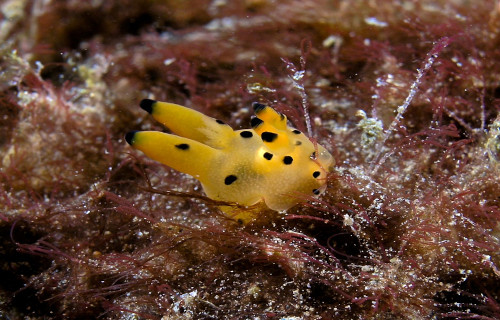
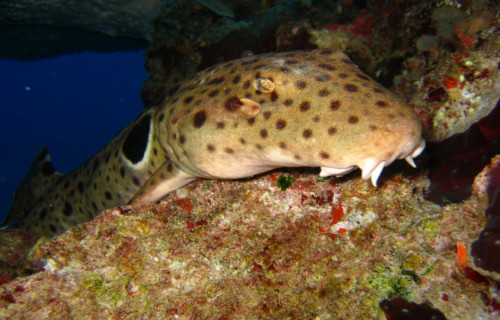
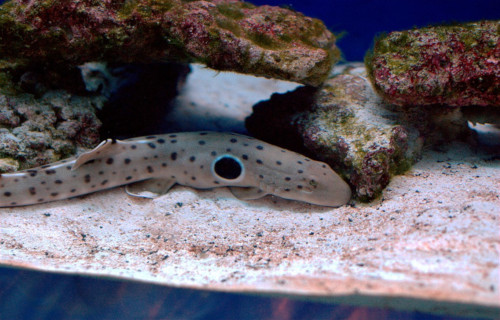
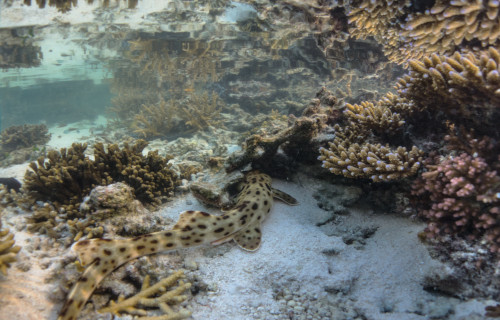
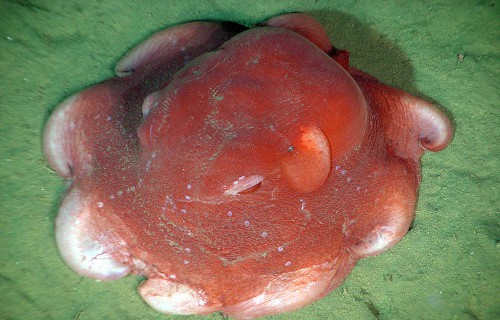
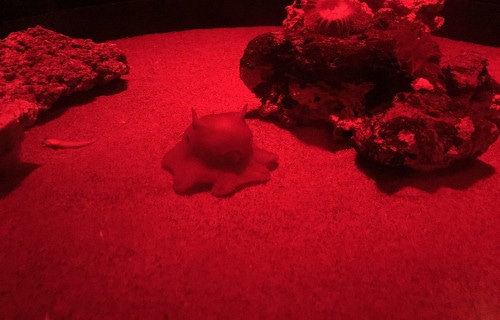
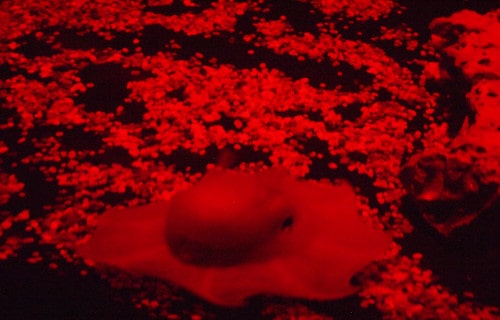
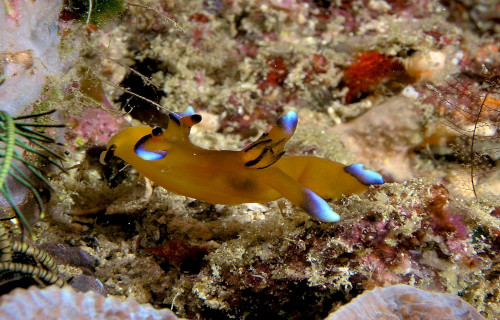
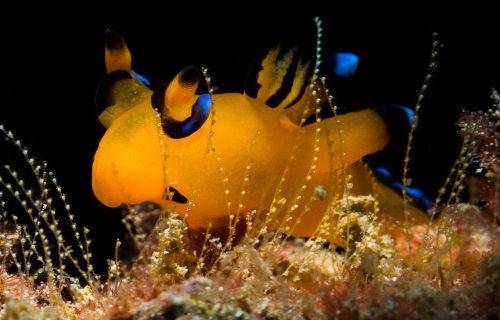
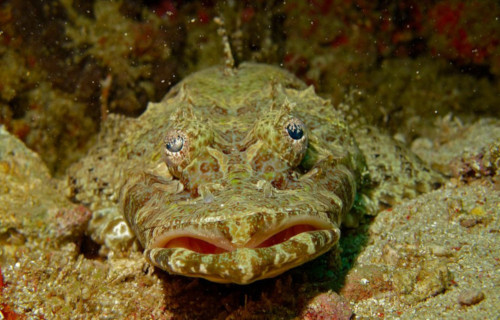
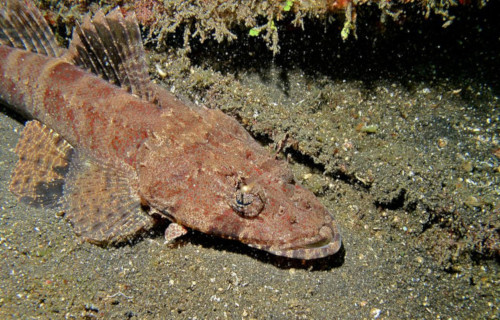
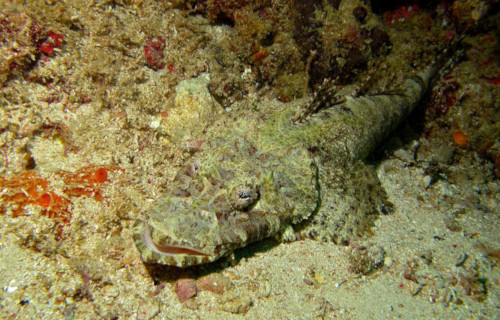
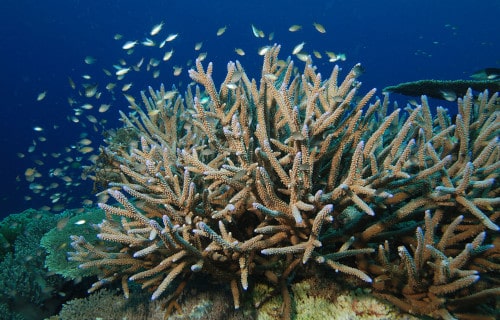
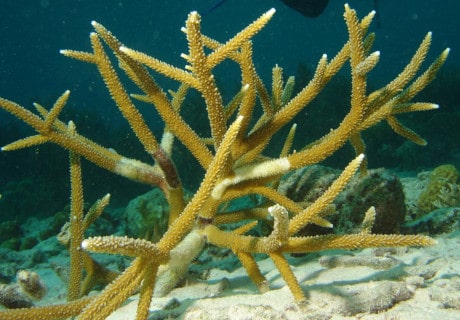
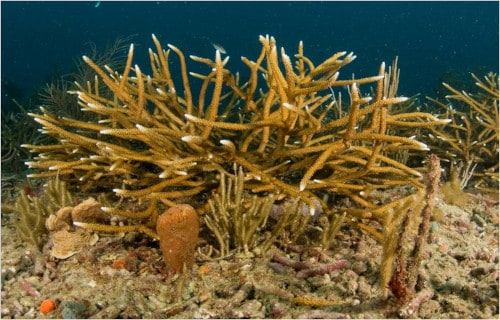
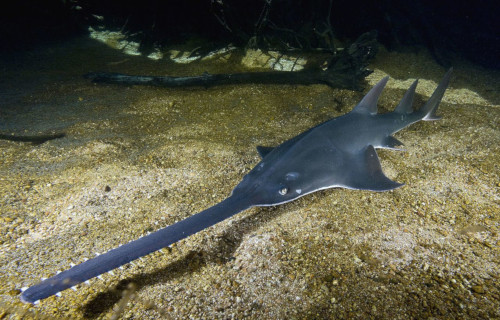
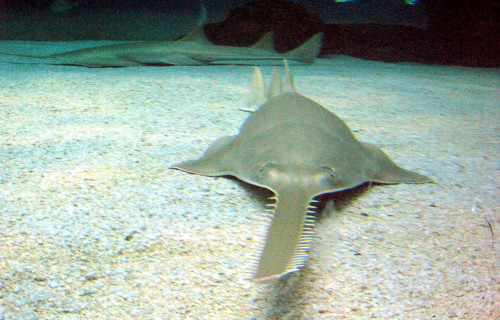
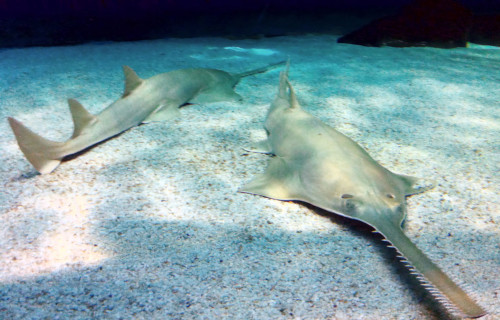
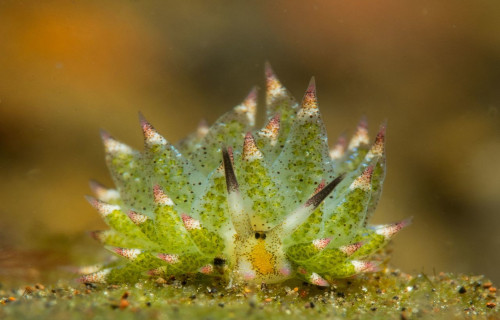
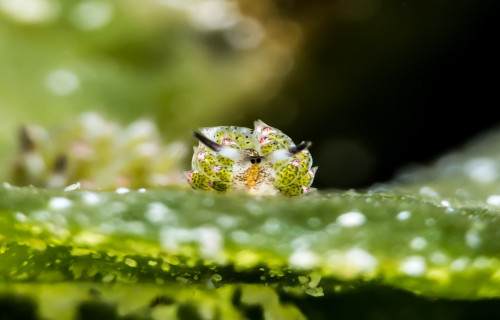
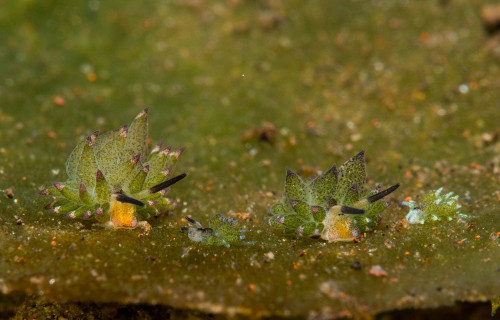









Leave a Reply